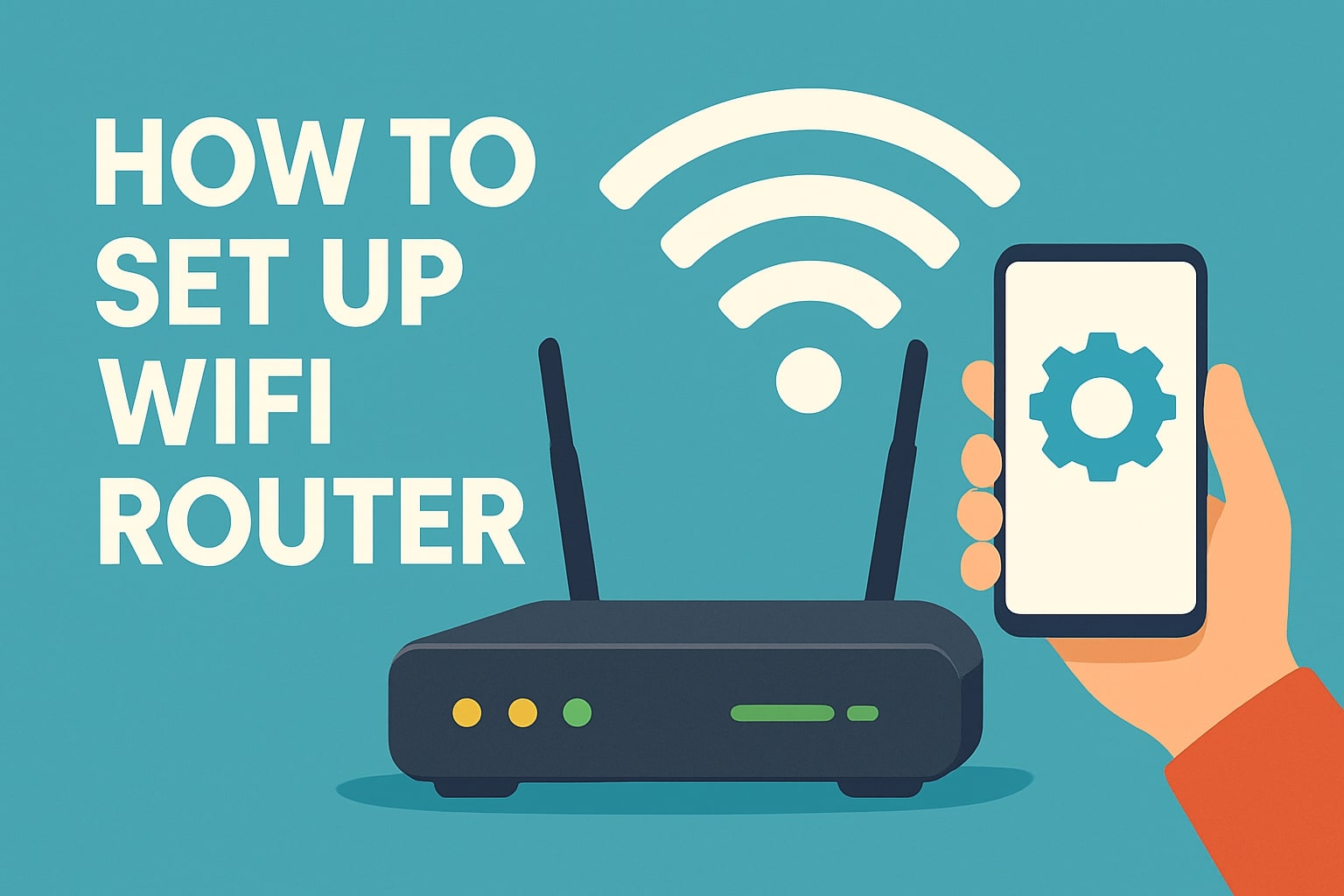What Equipment Do You Need for Router Setup?
Before learning how to set up WiFi router, gather necessary equipment including your new router, modem, Ethernet cables, and power adapters. Most routers include installation CDs or quick-start guides, though web-based setup is often more current and reliable. Ensure your internet service is active with your ISP before beginning installation.
You'll need a computer, tablet, or smartphone for configuration access. Have your internet service provider account information ready, including usernames, passwords, and any specific settings they require. Some ISPs provide specific configuration details that must be entered during setup. Keep your router's default login credentials handy - usually printed on a sticker attached to the device - as you'll need these for initial access to configuration settings.
📺 Featured Video

How to connect tv to ethernet cable to modem wi fi
by Crazy Dharmik
Step-by-Step WiFi Router Setup
Equipment Needed:
- New WiFi router
- Ethernet cable
- Computer or smartphone
- Internet service provider information
- Router manual
Step 1: Unpack and Position Router
- Remove router from box and check all components
- Place router in central, elevated location
- Keep away from metal objects and walls
- Ensure good ventilation around the device
- Position antennas (if adjustable) vertically
Step 2: Connect Hardware
- Connect power adapter to router and plug into outlet
- Wait 1-2 minutes for router to fully boot up
- Connect ethernet cable from modem to router WAN port
- Connect computer to router via ethernet or WiFi
- Check that all indicator lights are stable
Step 3: Access Router Settings
- Open web browser and go to 192.168.1.1 or 192.168.0.1
- Enter default username/password (usually admin/admin)
- Look for login info on router label if defaults don't work
- Access the router configuration page
- Look for Quick Setup or Setup Wizard
Step 4: Configure Internet Connection
- Select your internet connection type (usually DHCP/Dynamic)
- Enter ISP-provided settings if required
- Test internet connectivity
- Save settings and wait for router to restart
- Verify internet access on connected device
Step 5: Set Up WiFi Network
- Navigate to Wireless/WiFi settings
- Create network name (SSID) - avoid personal information
- Choose WPA3 or WPA2 security (never WEP or Open)
- Create strong password (12+ characters, mixed case, numbers, symbols)
- Set 5GHz and 2.4GHz bands if available
Step 6: Update Router Firmware
- Check current firmware version in admin panel
- Visit manufacturer website for latest firmware
- Download and install updates if available
- Allow router to restart completely after update
- Verify all settings are still correct
Step 7: Configure Security Settings
- Change default admin username and password
- Disable WPS if not needed
- Enable firewall protection
- Set up guest network if desired
- Configure parental controls if needed
Step 8: Test and Optimize
- Test WiFi speed and range throughout home
- Adjust antenna positions if applicable
- Choose less congested WiFi channels
- Position router for optimal coverage
- Document network name and password
What Are the Step-by-Step Installation Procedures?
The process of how to set up WiFi router begins with physical connections and power-up procedures. Connect your modem to the router's WAN or Internet port using an Ethernet cable, then plug in the router's power adapter. Wait 2-3 minutes for both devices to fully boot up and establish connections, indicated by steady LED status lights.
Access the router's configuration interface by connecting a device to the network and navigating to the router's IP address (commonly 192.168.1.1 or 192.168.0.1) in a web browser. Log in using default credentials, then follow the setup wizard to configure your internet connection type, create your WiFi network name (SSID), and set a strong password. Many modern routers feature mobile apps that simplify this process with guided setup procedures.
📺 Featured Video

How to Set Up Your Home Internet in 15 Minutes | T-Mobile
by T-Mobile
How Do You Optimize WiFi Coverage and Security Settings?
After basic setup, optimizing your network involves configuring security settings and maximizing coverage. Enable WPA3 encryption (or WPA2 if WPA3 isn't available) to protect your network from unauthorized access. Create a strong, unique password combining letters, numbers, and symbols. Consider hiding your network name (SSID) for additional security, though this isn't foolproof protection.
Position your router centrally and elevated for optimal coverage, away from interference sources like microwaves and metal objects. Many routers offer dual-band or tri-band capabilities - configure both 2.4GHz and 5GHz networks for different device needs. Update router firmware regularly for security patches and performance improvements. When learning how to set up WiFi router for larger spaces, consider WiFi extenders or mesh systems to eliminate dead zones and ensure consistent coverage throughout your property.
📺 Featured Video

How to Setup WIFI Repeater | How to setup wifi extender
by Pro Solutions
